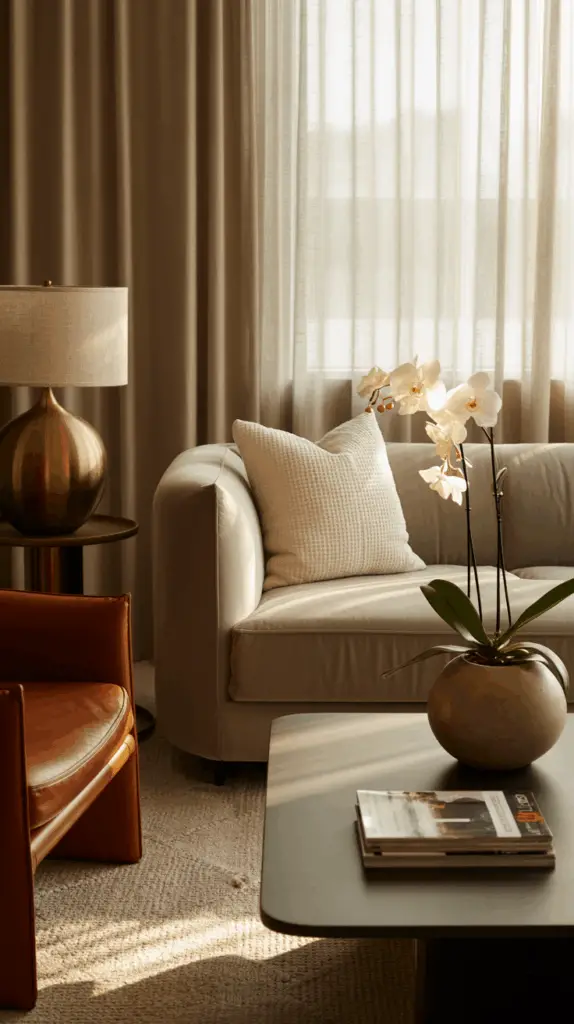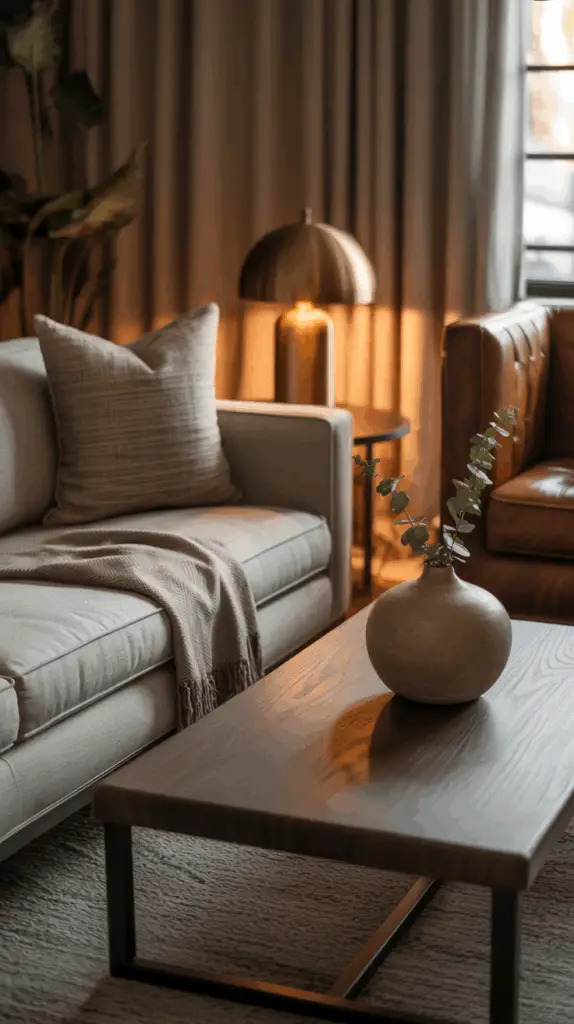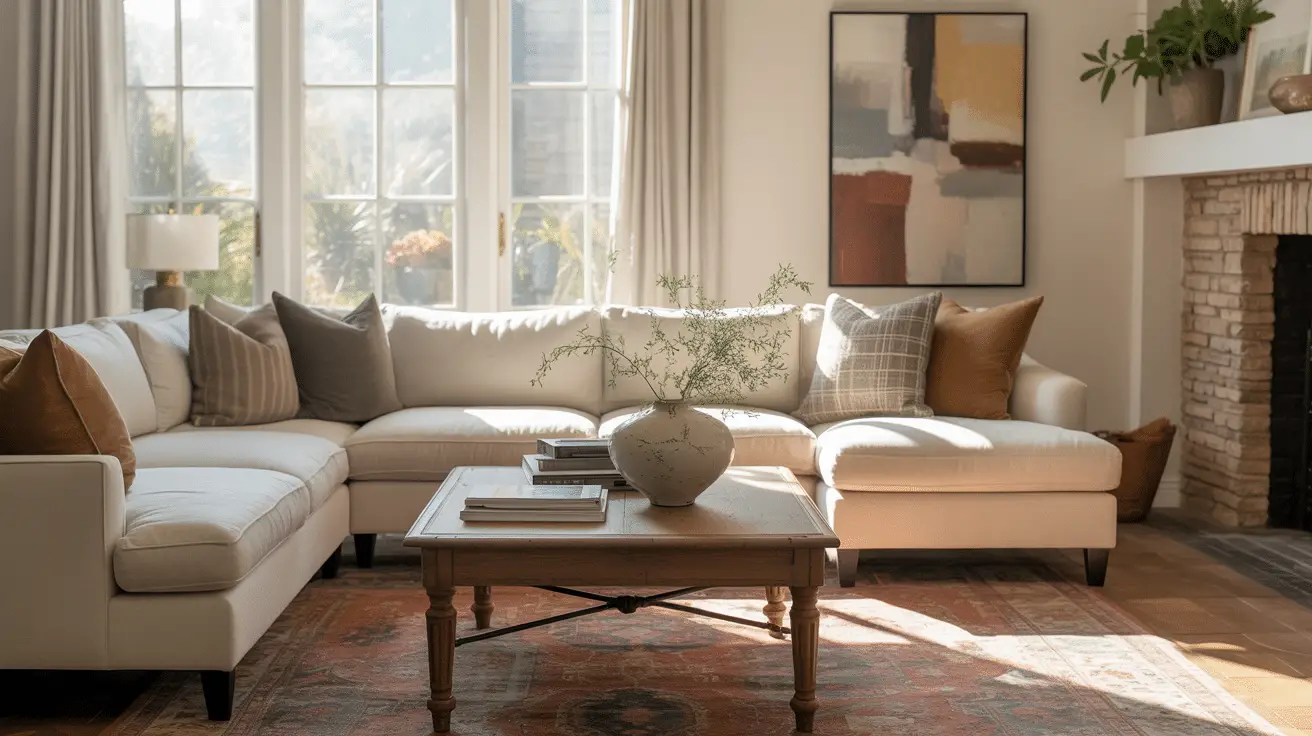Timeless Transitional Living Room Set Up Ideas for Effortless Style and Comfort
Table of Contents
Introduction
When designing your living room, it’s essential to create a space that not only feels comfortable but also exudes style and elegance. One of the most popular ways to achieve this balance is through a transitional design, a style that bridges traditional and contemporary aesthetics. With its ability to adapt to changing trends while maintaining a timeless appeal, transitional living room setups are perfect for homeowners who want a space that’s both functional and chic.
In this blog post, we’ll explore various transitional living room set up ideas that can help you achieve the perfect blend of old-world charm and modern convenience. Whether you’re looking for design inspiration, layout tips, or advice on choosing the right furniture and accessories, this guide will offer practical suggestions to help you curate a space that’s both timeless and inviting. So, let’s dive into the world of transitional living room design and explore how you can create a cozy, sophisticated environment in your home.
What Is Transitional Design and Why Is It Popular?
Before we dive into the specifics of setting up a transitional living room, it’s important to understand what this design style is all about. Transitional design is a perfect blend of traditional and contemporary elements, offering the best of both worlds. It combines the warmth, elegance, and symmetry of traditional décor with the clean lines, simplicity, and functionality of modern style.
One reason for the popularity of transitional design is its versatility. It’s a style that works well with various architecture types and can easily be adapted to suit your personal taste. Whether you prefer a neutral color palette or a more eclectic mix of shades, transitional design can accommodate both, ensuring your living room feels both timeless and personalized.
Key Elements of Transitional Design:
- Neutral Colors: Beige, gray, and ivory dominate the color palette, creating a calm, balanced atmosphere.
- Textured Fabrics: From plush velvets to linen and leather, these materials are used to bring richness and warmth.
- Functional Layout: Clean lines and uncluttered spaces create a relaxed, inviting environment.
- Classic Accents: Incorporating antique furniture or traditional patterns adds a touch of sophistication.
Selecting the Right Furniture for a Transitional Living Room
When it comes to transitional design, furniture plays a crucial role in setting the tone for the space. The key is to choose pieces that strike a balance between the traditional and contemporary elements. This could mean opting for classic furniture silhouettes but in modern materials, or selecting minimalist pieces with subtle ornate detailing.
Consider a blend of clean-lined sofas and armchairs paired with more traditional wooden coffee tables or side tables. Materials such as wood, leather, and metal are commonly used, and they should complement one another to create a harmonious look.
Furniture Tips for Transitional Living Room Setup:
- Sofas and Chairs: Choose neutral-colored sofas with sleek lines and soft, comfortable upholstery. Leather or linen fabrics are ideal choices.
- Coffee Tables and Side Tables: Mix modern glass tables with more classic wooden pieces for a sophisticated touch.
- Storage Solutions: Open shelving or traditional wood bookshelves can add both function and aesthetic appeal.
- Accent Pieces: A traditional armchair with modern throw pillows or a contemporary lamp with vintage brass accents can create a unique focal point.

Color Palette: Neutral Tones with Pops of Color
A key characteristic of transitional design is the use of neutral tones that create a calm, welcoming atmosphere. Shades of beige, gray, and white provide the perfect backdrop for a space that balances modern simplicity with classic elegance. However, this doesn’t mean your living room has to be bland or colorless.
Adding subtle pops of color through accessories such as throw pillows, artwork, and rugs can breathe life into your space without overpowering the neutral foundation. Opt for muted tones like soft blues, sage greens, or warm golds to keep the space feeling serene yet sophisticated.
How to Incorporate Color:
- Accent Walls: A muted accent wall in a complementary color can add depth without disrupting the overall aesthetic.
- Textiles: Rugs, curtains, and throw pillows in soft pastels or deep jewel tones can add warmth and personality.
- Artwork: Framed artwork or prints can feature bold colors, creating a striking contrast against neutral walls.

Lighting: Creating Ambience with Style
Lighting plays an essential role in any living room design, especially when working with a transitional aesthetic. Soft, ambient lighting enhances the cozy atmosphere of the room, while strategically placed accent lighting can highlight the architectural features and artwork.
Layering light sources—such as overhead lighting, table lamps, and floor lamps—adds depth and flexibility to the space. For a more modern feel, consider using sleek, minimalist lighting fixtures. For a traditional touch, classic chandeliers or ornate table lamps can be incorporated.
Lighting Tips for a Transitional Living Room:
- Layered Lighting: Use a combination of ceiling lights, floor lamps, and table lamps to create a balanced glow.
- Dimmers: Install dimmer switches to adjust the light intensity and create different moods.
- Statement Fixtures: A modern chandelier with clean lines or a vintage-inspired lamp can serve as a focal point.
Incorporating Textures and Patterns
Textures are an integral part of a transitional living room, adding richness and depth to the design. The key to making textures work is to use them sparingly and thoughtfully to complement your furniture and color palette. Layering different textures, such as velvet cushions, wool throws, and linen curtains, adds warmth and visual interest to the room.
Patterns can be used strategically to create a balanced look. Consider mixing geometric patterns with floral or stripe designs, but always ensure they are kept within the neutral or subdued color scheme to maintain harmony.
How to Mix Textures and Patterns:
- Throw Blankets & Pillows: Combine different textures such as velvet, linen, and wool for added comfort and dimension.
- Area Rugs: Choose rugs with subtle patterns in neutral tones to anchor the space.
- Curtains: Sheer or linen curtains in soft hues add texture while maintaining a light, airy feel.
Incorporating Traditional and Modern Art
In transitional design, artwork is more than just decoration; it’s an essential element that can elevate the entire room. The key is to choose pieces that complement the traditional-modern mix. Whether you opt for classical portraits, abstract paintings, or vintage photographs, the artwork should serve as a visual bridge between the old and the new.
Consider pairing a modern, abstract painting with a vintage-style frame or hanging classic black-and-white photographs above a contemporary sofa. This combination adds personality to the room while maintaining the aesthetic harmony of the transitional design.
Art Tips for Transitional Living Room Design:
- Balance: Choose art pieces that reflect both traditional and modern styles without clashing.
- Frames: Use simple, sleek frames for contemporary pieces and ornate frames for more traditional artwork.
- Placement: Hang artwork at eye level to create visual harmony, and avoid overcrowding the walls.
Conclusion
Designing a transitional living room is all about creating a space that feels both timeless and inviting. By blending traditional and modern elements, you can craft a room that adapts to your personal style and remains relevant for years to come. Whether you focus on furniture, color palettes, or lighting, the key is to achieve a balance that feels both comfortable and sophisticated. Remember, transitional design is versatile and flexible, so take the time to experiment with different elements to discover what works best for your home.
By following the tips and ideas shared in this guide, you can transform your living room into a stylish, welcoming space that exudes warmth, elegance, and timeless appeal.

